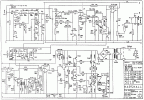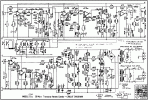mrjones2004x
Well-Known Member
- Joined
- Mar 30, 2010
- Messages
- 747
- Reaction score
- 1,563
So I’ve got my 5210 back from Marshall and all the pots and jacks are new and working great. I cleaned up the tolex today with some convertible roof cleaner and it worked amazing but I have a query.
There is noticeable static type noise when adjusting the volume pots on my guitars. I asked the Marshall tech about this and he said the amp circuit design causes this.
I have noticed all guitars do it but the worst are my pcb gibsons.
I’ve read before about dc noise ect. Is there a way I could get rid of this issue?
There is noticeable static type noise when adjusting the volume pots on my guitars. I asked the Marshall tech about this and he said the amp circuit design causes this.
I have noticed all guitars do it but the worst are my pcb gibsons.
I’ve read before about dc noise ect. Is there a way I could get rid of this issue?


